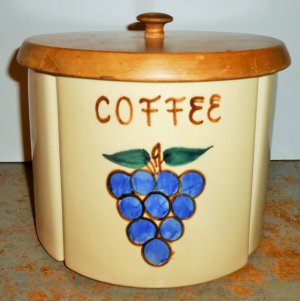
The year was … well I’m not sure of the exact year but it was some time in the mid-1920’s. That was when a type of inexpensive glass began to be mass produced for the American table.

It was meant to be cheap enough that everyone could have pieces of it in their home. In fact, some of it was given away as premiums. You could purchase a product and you could get a bowl or a cup with it (like finding the decoder ring in the box of cereal or an N’Sync CD for you 90’s people). It was used as a way to gain product loyalty.

According to the National Depression Glass Association the colors it came in ranged from crystal (clear), amber, yellow, pink, green and blue with amber and yellow being the most mass-produced. There are a couple of colors that had very short runs and therefore are the ones that command the highest prices from the collectors.

Those colors are tangerine (created by the Heisey Company) and a lavender that a couple of companies tried but did not sell well.
Depression glass is a fairly thin glass because, don’t forget it was supposed to be inexpensive. Many times there are rough edges on it where the glass squeezed out of the mold and was not ground off in the finishing process. There is also a distinction between “Depression Glass” and “Elegant Glass.” Depression Glass was a basic glass that had maybe a simple pattern like lines or “ribs” or a flat-panel type design that was created with the mold. Elegant Glass, however can have intricate designs etched into the glass after it came out of the mold.

Elegant Glass usually has a smoother finish along the edges as the time was taken to grind down seams so it sat flush on the table. Elegant Glass of course, was a little more expensive.
Glassbottlemarks.com tells us that that the following companies made Depression Glass: ” Hazel Atlas Glass Company, Hocking Glass Company (and later Anchor Hocking Glass Company/Corporation), Federal Glass Company, Indiana Glass Company, MacBeth-Evans Glass Company, Jeanette Glass Company, Imperial Glass Company, Lancaster Glass Company, U.S. Glass Company, and L. E. Smith Glass Company.”

They also say that ““Elegant Glass”, [w]as produced by such companies as Westmoreland Glass Company, Imperial Glass Company, Fostoria Glass Company, A. H. Heisey & Company, and others.”
As far as patterns, they are too numerous to list. The two sites quoted in this post are the best places to start if you are researching a pattern.

By the end of the depression less than 50 companies were producing the glass but it has become highly collectible. The green, pink and blue seem to be the most collected today, with the lavender and tangerine being rare but desired by most collectors.
I hope you have enjoyed this very small overview of Depression Glass. I find the history of it fascinating, myself. Since it was rather thin and cheap, it is amazing that pieces still exist, but they do. Take a look at the other sites I’ve quoted in this post for more information.
If you are looking for some Depression Glass or any other vintage items, take a look in my store Vintage Eve’s.





























 bowl and creamer to start with. Each piece was hand-painted. They had only 8 to 10 trained artists at any given time and they were each trained to work the designs that were staples of the company’s business. But because they each had a different style the pieces themselves, while similar are all unique. This is their classic Apple pattern. Another piece that bears that same pattern is the Lemonade Pitcher with an ice lip. Such a graceful piece and it has survived since the 1940s. I find that amazing.
bowl and creamer to start with. Each piece was hand-painted. They had only 8 to 10 trained artists at any given time and they were each trained to work the designs that were staples of the company’s business. But because they each had a different style the pieces themselves, while similar are all unique. This is their classic Apple pattern. Another piece that bears that same pattern is the Lemonade Pitcher with an ice lip. Such a graceful piece and it has survived since the 1940s. I find that amazing.
 was done on greenware which means they have not been fired yet and are at their most fragile. But utilizing this method and having the handles attached at this point rather than after the first firing made the handles stronger and the process faster.
was done on greenware which means they have not been fired yet and are at their most fragile. But utilizing this method and having the handles attached at this point rather than after the first firing made the handles stronger and the process faster.

